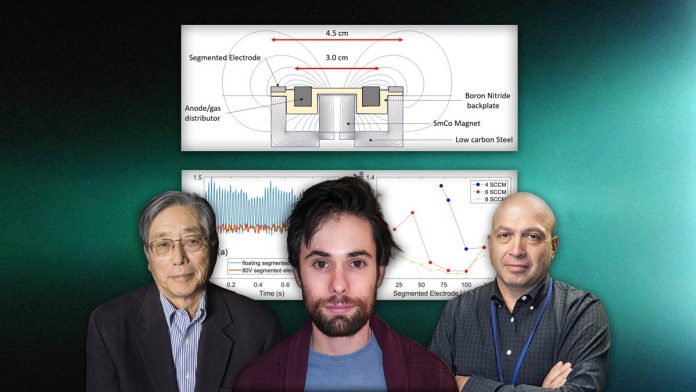The increasing interest in deep-space exploration has emphasized upon the need for powerful long-lived rocket systems to drive spacecraft through the cosmos. U.S. Department of Energy and Princeton Plasma Physics Laboratory researchers together have developed a tiny modified version of a plasma-based propulsion system. They have named it Hall thruster. It will increase the lifetime of the rocket and will also produce high power.
This miniaturized system is powered by plasma and the state of matter is composed of free-floating electrons and atomic nuclei, or ions. These things eliminate the walls around the plasma propellent to create innovative thruster configurations. There are two types of Hall thruster, one is cylindrical Hall thruster and another is fully wall-less Hall thruster. Both the Hall thrusters reduce channel erosion caused by plasma-wall interactions that limit the thruster lifetime. This was a key problem for conventional annular. This is why scientists have invented Hall thrusters to miniaturized low-power thrusters for applications on small satellites.
Cylindrical Hall thrusters have been invented by PPPL physicists Yevgeny Raitses and Nat Fisch in 1999. Laboratory’s Hall Thruster Experiment students have read it in details. Countries like Korea, Japan, China, Singapore, and the European Union has also studied the PPPL devices.
Wall-less Hall thrusters can minimize channel erosion. But they have problems such as extensive widening or divergence, of the plasma thrust plume. This type of problems degrades the system’s performance. PPPL has tried to reduce this problem by installing a key innovation on its new wall-less system in the form of a segmented electrode. This new innovation will not only reduce the divergence and helps to intensify the rocket thrust but it will also suppress the hiccups of small-size Hall thruster plasmas that interrupt the smooth delivery of power.
segmented electrodes had been used in Hall thrusters before. Scientists have previously used such electrodes to control the plasma flow in conventional annular Hall thrusters. But the new Simmonds is much stronger and has greater impact on the overall thruster operation and performance.

